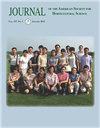Transcriptome Analysis of Acer truncatum Seeds Reveals Candidate Genes Related to Oil Biosynthesis and Fatty Acid Metabolism
IF 1.1
4区 农林科学
Q3 HORTICULTURE
Journal of the American Society for Horticultural Science
Pub Date : 2021-03-01
DOI:10.21273/jashs05013-20
引用次数: 1
Abstract
Acer truncatum seeds are an excellent source of beneficial natural compounds, including high levels of unsaturated fatty acids (UFAs), that promote health. Recently, A. truncatum has emerged as an oil crop. Therefore, the transcriptomes of A. truncatum seeds at 70, 85, 100, 115, 145, 180 days after flowering (DAF) were analyzed to gain a better understanding of the transcriptional and translational regulation of seed development and oil biosynthesis. A total of 28,438 genes were identified, and 3069/2636, 3288/3438, 1319/2750, and 5724/5815 upregulated/downregulated genes were identified when comparing different samples with 85 DAF seeds. Sixteen lipid metabolism pathways with 754 differentially expressed genes (DEGs) were identified, including 34 DEGs associated with UFA biosynthesis. A phylogenetic analysis revealed that six putative fatty acid desaturase (FAD) genes clustered into five FAD groups. A quantitative real-time polymerase chain reaction analysis indicated that the temporal expression patterns of oil biosynthesis genes and transcription factors were largely similar to the RNA sequencing results. The results of this study will enhance the current understanding of oil metabolism in A. truncatum seeds and allow new methods of improving oil quality and seed yield in the future.枫槭种子转录组分析揭示与油脂合成和脂肪酸代谢相关的候选基因
槭仁是有益的天然化合物的极好来源,包括高水平的不饱和脂肪酸(UFAs),促进健康。最近,一种油料作物出现了。因此,我们分析了开花后70、85、100、115、145和180天的白杨种子转录组,以便更好地了解开花后种子发育和油脂生物合成的转录和翻译调控。共鉴定出28,438个基因,在85个DAF种子的不同样品中鉴定出3069/2636、3288/3438、1319/2750和5724/5815个上调/下调基因。共鉴定出16条脂质代谢途径,共754个差异表达基因(DEGs),其中34个与UFA生物合成相关。系统发育分析显示,6个假定的脂肪酸去饱和酶(FAD)基因聚集在5个FAD群中。实时定量聚合酶链反应分析表明,油脂生物合成基因和转录因子的时间表达模式与RNA测序结果基本相似。本研究结果将进一步加深对白杨种子油脂代谢的认识,并为今后提高油质和种子产量提供新的方法。
本文章由计算机程序翻译,如有差异,请以英文原文为准。
求助全文
约1分钟内获得全文
求助全文
来源期刊
CiteScore
3.80
自引率
0.00%
发文量
31
审稿时长
2 months
期刊介绍:
The Journal of the American Society for Horticultural Science publishes papers on the results of original research on horticultural plants and their products or directly related research areas. Its prime function is to communicate mission-oriented, fundamental research to other researchers.
The journal includes detailed reports of original research results on various aspects of horticultural science and directly related subjects such as:
- Biotechnology
- Developmental Physiology
- Environmental Stress Physiology
- Genetics and Breeding
- Photosynthesis, Sources-Sink Physiology
- Postharvest Biology
- Seed Physiology
- Postharvest Biology
- Seed Physiology
- Soil-Plant-Water Relationships
- Statistics

 求助内容:
求助内容: 应助结果提醒方式:
应助结果提醒方式:


